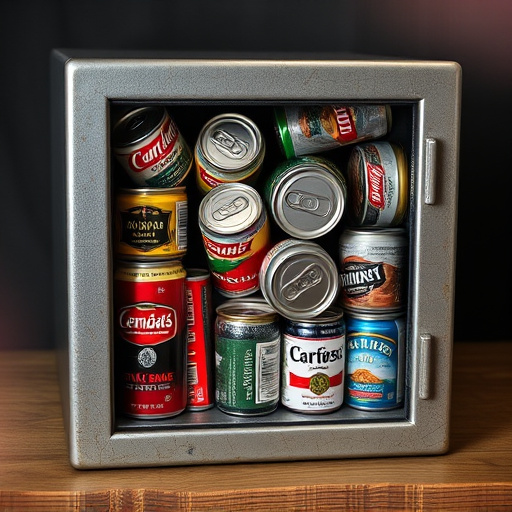In pursuit of a clean space, many people unknowingly use fake cleaning products that double as hidden compartments for storing illicit substances or sensitive materials. These cleverly designed products, disguised by transparent containers and innocuous labels, employ strategic features like weight distributions and textural alterations to conceal their true purpose. By mimicking genuine cleaning items, these fake products offer both security and discretion, ideal for travelers and professionals handling sensitive information. Rigorous testing and refinement ensure their effectiveness in maintaining secrecy while blending seamlessly with everyday household items.
Uncover a hidden world of security with everyday items transformed into covert compartments. We explore how seemingly innocuous fake cleaning products can be cleverly redesigned to hide secrets. Learn about innovative materials and techniques for creating your own secret stowage spaces, offering discreet storage solutions. Discover the practical applications of integrating security into daily objects, turning ordinary items into hidden fortresses for valuable belongings.
- Unveiling the Concealed: How Fake Cleaning Products Can Be More Than Meets the Eye
- Designing Your Own Covert Compartment: Materials and Methods for Secrecy
- Practical Applications: Everyday Items as Hidden Security Units
Unveiling the Concealed: How Fake Cleaning Products Can Be More Than Meets the Eye
In the pursuit of a clean and organized space, many people rely on seemingly harmless cleaning products. However, what if these everyday items hold secrets that could compromise security? Unbeknownst to many, certain cleaning products—particularly those designed to mimic natural ingredients—can serve as sophisticated hiding places for illicit substances or sensitive materials. These fake cleaning products often possess hidden compartments, cleverly disguised within their transparent containers or labeled with innocuous names.
Upon closer inspection, these products may exhibit unusual weight distributions, subtle alterations in texture, or even telltale signs of modification. While they appear to clean and freshen your environment, they could be more like secret vessels for transporting contraband or valuable items. The allure of a Fake Cleaning Product Secret Compartment lies in its ability to blend seamlessly into daily routines, making it an innovative yet insidious means for secure storage—a hidden fortress within plain sight.
Designing Your Own Covert Compartment: Materials and Methods for Secrecy
Designing a covert compartment within everyday items, such as a fake cleaning product, requires careful consideration of materials and construction methods to ensure secrecy and security. The first step is to select materials that blend in with the item’s appearance while offering some level of concealment. For example, using a similar plastic or material as the original item can help it go unnoticed. Incorporating subtle design elements, like hidden compartments or hollowed-out spaces, allows for secure storage of small items.
One method to create a fake cleaning product secret compartment involves altering the internal structure of the item. This might include adding thin, flexible dividers to create concealed spaces or using removable parts to access hidden areas. Adhesives and specialized sealants can be employed to ensure the compartment’s secrecy by sealing it tightly, making it difficult for others to detect. Testing and refining these methods are crucial to achieving a successful covert compartment that remains undetected.
Practical Applications: Everyday Items as Hidden Security Units
In today’s world, security and discretion go hand in hand, especially when safeguarding sensitive items or maintaining privacy. One innovative approach to enhancing security involves using everyday items as hidden compartments. For instance, a seemingly ordinary fake cleaning product can be meticulously designed with secret storage spaces, allowing individuals to discreetly carry important objects like passwords, financial records, or even small devices. This practical application leverages the commonality of household products, making it an accessible and unassuming method for personal security.
Imagine stowing away crucial documents in a bottle of cleaning solution, stored in plain sight but easily concealable when needed. Such creative uses of everyday items offer a unique advantage by providing both functionality and secrecy. This approach is particularly appealing for travelers, professionals dealing with sensitive information, or anyone seeking an extra layer of protection for their belongings without drawing unnecessary attention.
In exploring the potential of hidden compartments within everyday items, particularly using seemingly innocuous fake cleaning products, we’ve uncovered a fascinating world of secret storage. By understanding the design and materials involved, individuals can create their own covert compartments for various purposes. This article has demonstrated the versatility of everyday items as security units, offering creative solutions for discretion and safety. Remember that awareness is key; with knowledge, one can navigate the art of concealment in a modern world filled with both opportunities and challenges.
